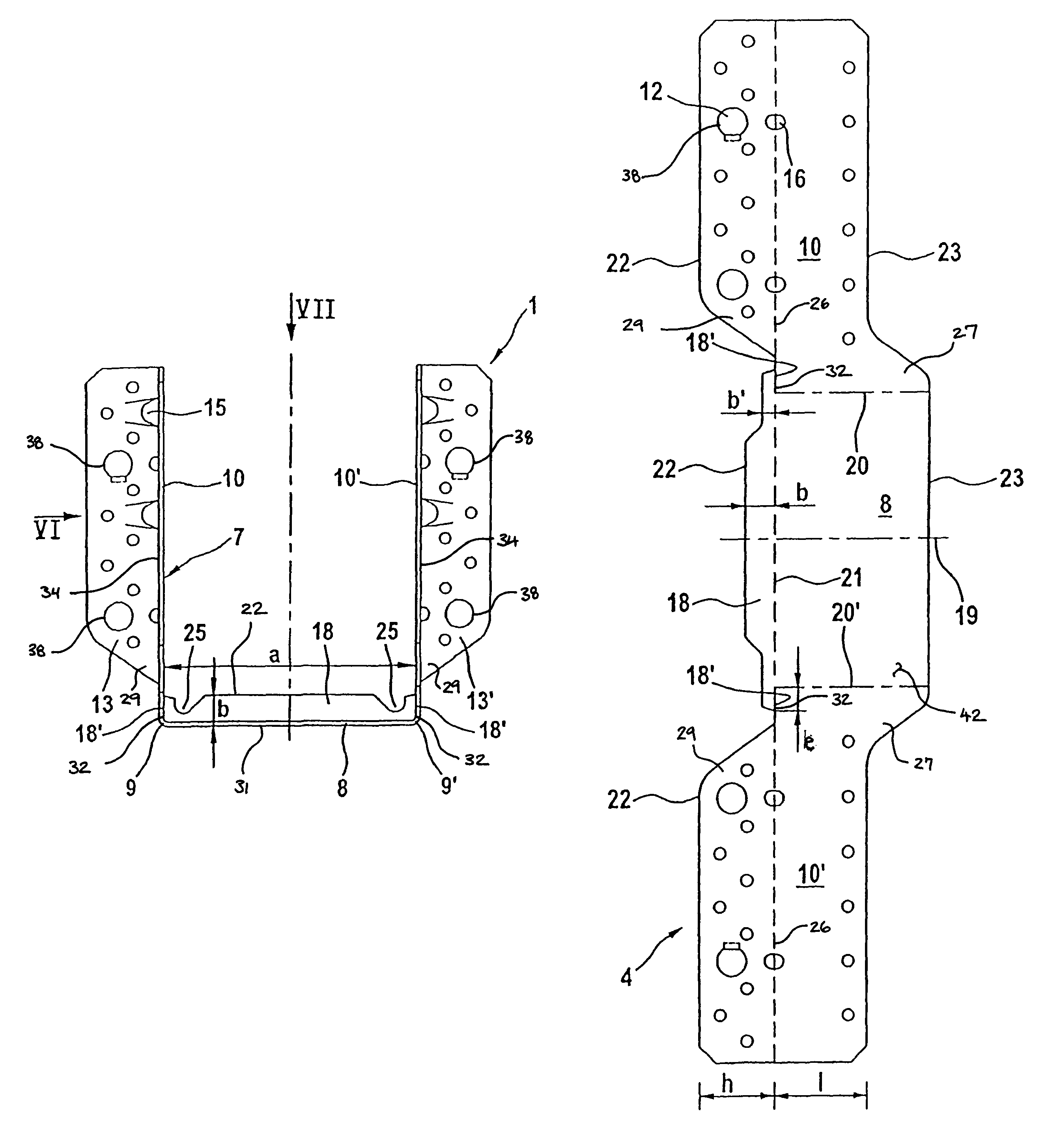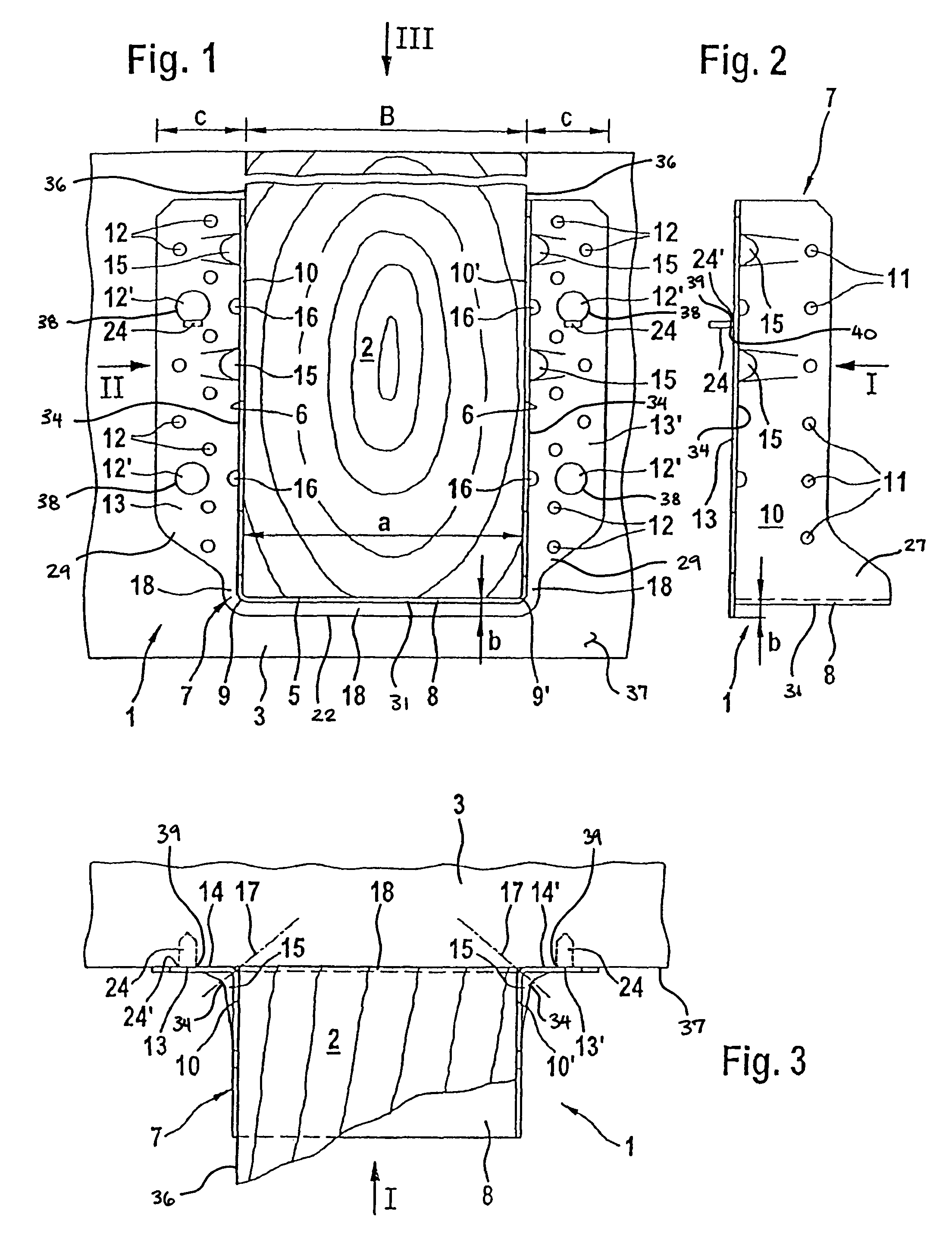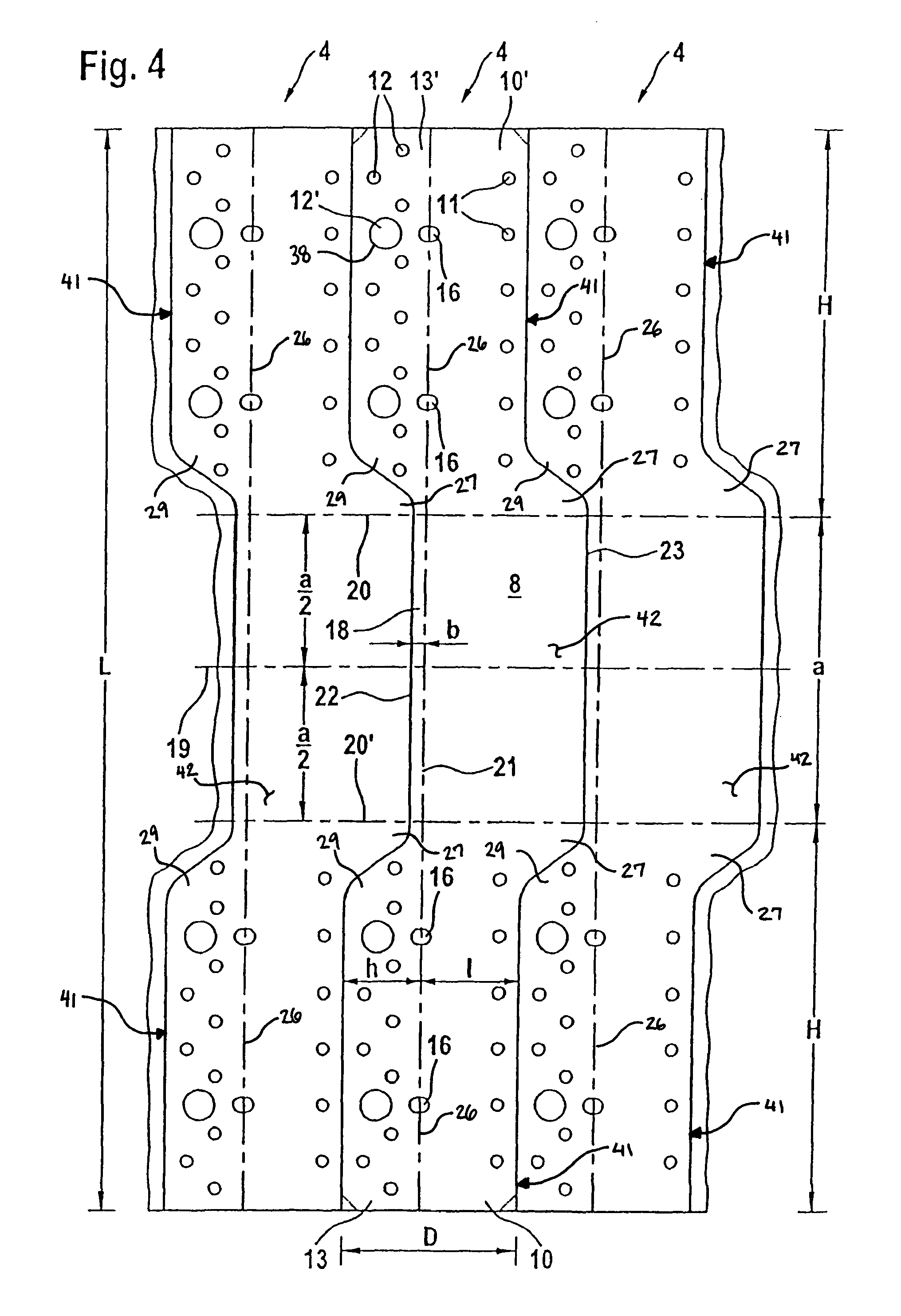Beam shoe
a beam shoe and bottom technology, applied in the field of beam shoes, can solve the problems of unsatisfactory for the desired goal, and possibly even inadmissible sagging and achieve the effect of a distinct increase of the section modulus of the beam shoe bottom
- Summary
- Abstract
- Description
- Claims
- Application Information
AI Technical Summary
Benefits of technology
Problems solved by technology
Method used
Image
Examples
Embodiment Construction
[0080]FIGS. 1 to 3 show a beam shoe denoted as a through hole by 1 for end-on attachment of a first beam 2 to a second beam 3 running in the same plane at right angles to the first beam 2. Beam shoe 1 comprises an originally flat, one-piece, strip-like sheet-metal blank 4 (see FIG. 4), which in the assembled condition (see FIGS. 1, 3) surrounds an end portion of beam 2 to be attached at its underside 5 and its side faces 6, 6 and is shaped to an upwardly open, channel-shaped retaining member 7 having a web-like, rectangular bottom 8 for bracing beam 2 to be attached on beam shoe 1 and having two web-like, parallel retaining legs 10, 10′, angled upwardly from bottom 8 along two mutually facing borders 9, 9′ of border 8, for joining beam shoe 1 to beam 2 to be attached. Therein the inside spacing “a” between the two retaining legs 10, 10′ is as large as the width “B” of first beam 2 to be attached, and the two retaining legs 10, 10′ are each provided with circular through holes 11 dis...
PUM
| Property | Measurement | Unit |
|---|---|---|
| thickness | aaaaa | aaaaa |
| thickness | aaaaa | aaaaa |
| width | aaaaa | aaaaa |
Abstract
Description
Claims
Application Information
 Login to View More
Login to View More - R&D
- Intellectual Property
- Life Sciences
- Materials
- Tech Scout
- Unparalleled Data Quality
- Higher Quality Content
- 60% Fewer Hallucinations
Browse by: Latest US Patents, China's latest patents, Technical Efficacy Thesaurus, Application Domain, Technology Topic, Popular Technical Reports.
© 2025 PatSnap. All rights reserved.Legal|Privacy policy|Modern Slavery Act Transparency Statement|Sitemap|About US| Contact US: help@patsnap.com



